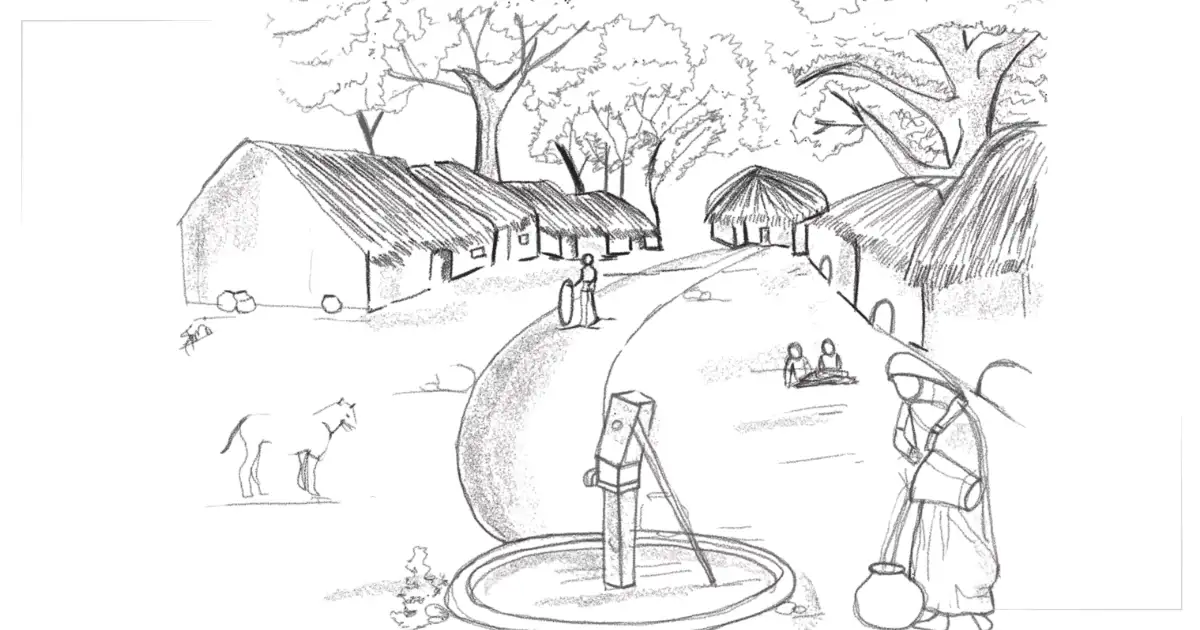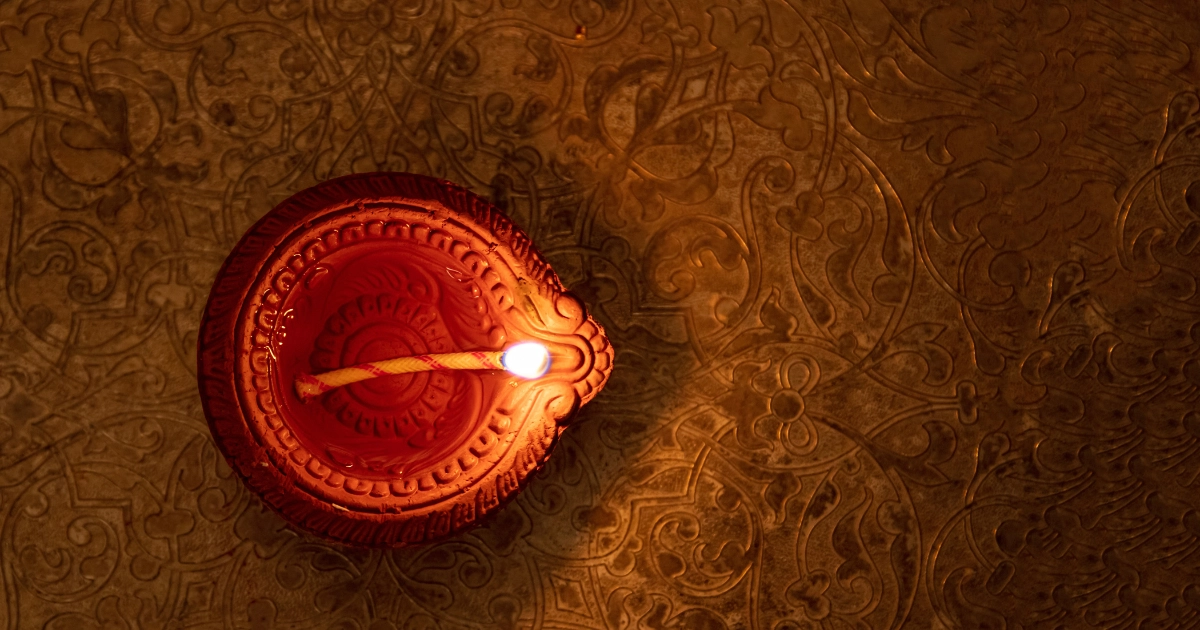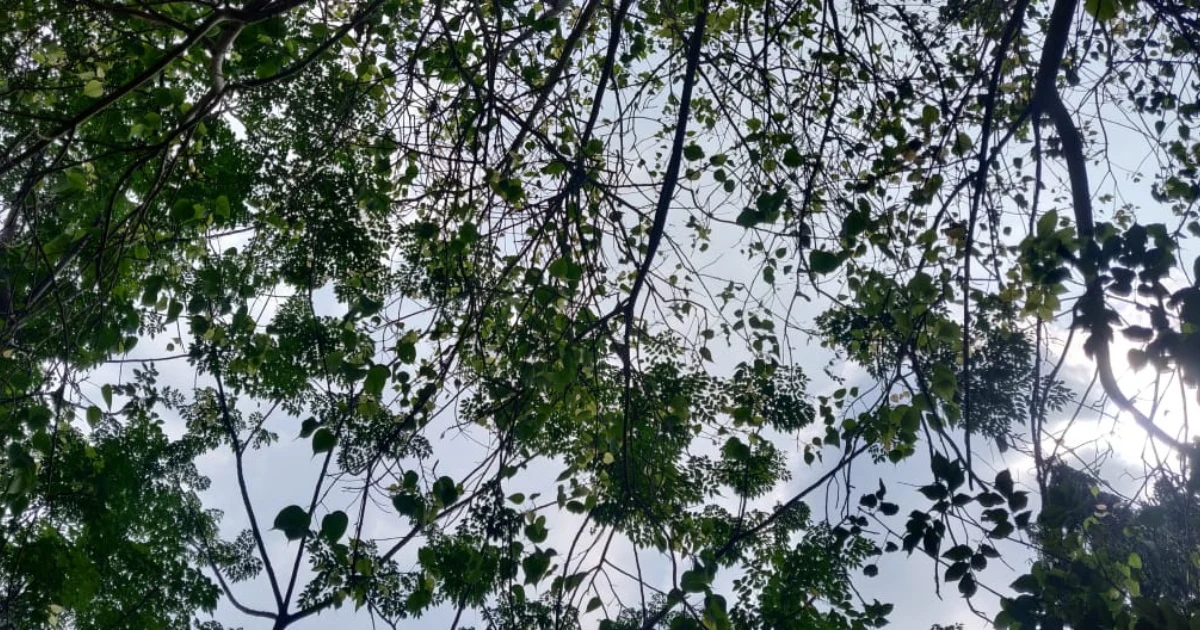A celebration of architecture as living memory and ethical ritual, this essay rejects the sterility of modernist design in favor of earth-rooted, place-based wisdoms. It invites us to reimagine buildings not as structures but as stories - woven through ecology, ritual, and community. In listening to land, wind, and lineage, we rediscover how to dwell in harmony with the cosmos.
I. The House that Remembers
In a forest clearing in Adilabad, where the wind curls like a dancer and the earth breathes in clay, there stands a hut - not drawn by architects, not sanctioned by engineers. It is round, low, and modest. And yet, it defies monsoon gales, it resists erosion, and it gathers warmth like a womb. Built by a tribe who never read the Vāstu-śāstra, this hut echoes its every verse.
This is not a story of buildings, as Ravindra Sharma Guru ji explains, it is a story of remembering. Of a time when to dwell was not to occupy but to attune — to the breeze that tells you where to place your door, to the stars that whisper when to begin, to the soil that murmurs, “Here. Build here.”
Before the CAD drawing and the concrete mixer, there was listening.
Before terrace gardens, there was a rendezvous under a banyan tree.
Before loneliness in privacy there was festivity in community.
Before the modern house, there was the cosmos.

II. The Betrayal of the Straight Line
What strange spell turned architecture into real estate? What rupture made walls mute and floors sterile?
B.V. Doshi, barefoot in Le Corbusier’s studio, felt both the awe and the ache. He saw clean lines and towering forms, but he searched in vain for courtyards that gather grandmothers, for thresholds that pause pilgrims, for windows that sip monsoon light like an old lover. He would later call out this void. He said:
Modernism forgot memory.
Liang Sicheng, across the Himalayas, felt it too. As colonial modernity bulldozed over Beijing’s wooden temples and dragon-breathed roofs, Liang unearthed the Yingzao Fashi — a thousand-year-old treatise not just on timber brackets and roof pitches, but on harmony with heaven and earth. Architecture, he reminded a forgetful world, was once choreography — of energy, of season, of spirit.
In the name of universality, Western modernism flattened the terrain of culture. “One size fits all” was its rallying cry. But in this flattening, it erased the pulse of place, the whisper of ritual, the long echo of the ancestors.

III. When Ritual Was Architecture
In ancient India, the prasūti-gṛha — the birthing room — was not tucked away in secrecy but oriented precisely, with regard to the winds and the energies. The kitchen — agni-koṇa — was placed where fire could breathe, smoke could leave, and the woman cooking could see who was arriving. The well in the īśānya corner was not placed there for luck, but for the logic of water flow, sunlight, and dignity.
What today is dismissed as superstition was once systemic. Rituals were not religious extras. They were mnemonic devices — ecological algorithms embedded in chants, songs, gestures. Amita Sinha calls them “spatial narratives”: a rangoli was not mere decoration, but a mapping of intention; the tulsi courtyard was not just sacred but antibacterial, aromatic, and social. We lived in a harmony in which āthitya was not just for fellow humans, but also other living beings such that puṇya and was woven into our daily ritual of feeding leftovers to cows, the everyday atithīs in our galīs and āṇganās. And that is how context encompassed the life and life-less, without even having to map the trees and electrical poles on the site.
In this paradigm, architecture was not “designed.” It was remembered — drawn forth from the earth like a raga from silence.
IV. The Vāstu-Puruṣa and the Dance of Directions

There is a tale. A ravenous demon, insatiable, threatens to consume all creation. The gods wrestle him to the ground, press him face-down onto the earth, and hold him there — each god anchoring a limb. That demon becomes the Vāstu-Puruṣa, the spirit of space. And to this day, every building rests upon his subdued form.
We do not build on land. We build upon a body.
This is why, for centuries, homes began not with brick but with prayer. The Vāstu-śānti ritual was not a formality. It was the feeding of the puruṣa — an act of gratitude, of cosmic reciprocity.
And what wisdom lies in this tale! That space is not neutral. That every act of building is a negotiation with the sacred, the dangerous, the alive. That each direction — īśānya, nāirṛtya, vāyavya, āgneyī — holds stories, energies, responsibilities.
To place the kitchen in the wrong corner was not unlucky — it was unwise. The winds would carry smoke into your neighbor’s breath. The elders, if misplaced in the vibrant north-west, would grow restless. The children, confined to the shadowy south, would wilt.
Vāstu was not geometry. It was a dharma of dwelling.
V. Ma, Feng Shui, and the Pulse of Absence
Across the seas in Japan, they speak of ma. Not space, not time — but the charged silence between things. The pause between notes in a shakuhachi flute, the hush between two shoji screens. Ma is what makes a home breathe.
In China, feng shui doesn’t decorate — it orchestrates. Mountains guard, rivers nourish, thresholds beckon, and mirrors deflect. These are not relics of folklore but blueprints of balance.
These ancient systems — Vāstu, Feng Shui, Ma — were not isolated traditions. They were cosmologies carved in stone and timber, woven into wind and water. They remind us that these were not just fancy terms to sell home decor, but symbols that imparted both knowledge and energy. They flowed, curved, breathed. They were and are alive.

VI: Rituals of Dwelling: Vāstu, and the Sacred Geometry of Everyday Life
While many modern approaches to architecture focus on function, individualism, and efficiency, Philosopher Byung-Chul Han reminds us of the ritual dimension of space — a dimension now largely lost in hyper-digital, neoliberal societies. In ‘The Disappearance of Rituals’ (2020), Han argues that:
Rituals transform being-in-the-world into a being-at-home.
This insight is crucial to understanding why Indian traditions of architecture, including vāstu, gave central importance to the cyclical rhythms of life, sacred directions, and embodied daily practices. In Han’s view, rituals allow humans to dwell poetically, a phrase he borrows and reinterprets from Heidegger, but repurposes through an East Asian sensibility rooted in form, slowness, and repetition.
In contrast to the modern obsession with novelty and speed, traditional Indian vāstu considers not only directions and elements but also ritual actions performed in and through space — from bhūmi pūjan and vāstu śānti, to the daily movement of elders, children, and guests through the home. Such architecture is not merely constructed but consecrated, not only inhabited but ritually lived.
By drawing on Han, one can argue that vāstu is not a superstition, but a civilizational technique for embedding memory, meaning, and mindfulness in the built environment. Where Western modernist architecture often abstracts the body and dissolves the sacred, vāstu — as with many Asian traditions — reclaims the home as a site of cosmological alignment and social coherence.
Han writes -
Without ritual, time slips into a flat continuum — lacking texture, lacking season. We become refugees of temporality.
In this sense, vāstu becomes a refuge of rhythm, an architectural affirmation that space is not neutral, but nourishing, if built with ritual intelligence.
VII. Toward a Living Future
Today, we inhabit containers. We rent boxes in the name of minimalism and call it elite. We forget the cardinal directions. We cover the earth in glass and call it “green.” We yearn to find a sense of belonging in the stone-finished, vitrified tiles; and cover this yearning in sound-proof curtains, and then fancily label it as contemporary - just to belong.
But there are glimmers. A circular hut in Adilabad. A community kitchen in Kutch, built with rammed earth and elder stories. A student at CEPT tracing her grandfather’s house, wondering why the front door always smelled of neem.
There is a remembering underway.
Vasant Kamath once said -
A good building is not one that amazes, but one that disappears — into its people, its place, its time.
Laurie Baker built homes so quiet they seemed to murmur, “Welcome.” Jyoti Hosagrahar writes of vernacular modernities, where heritage and innovation do not compete but entwine like banyan roots.
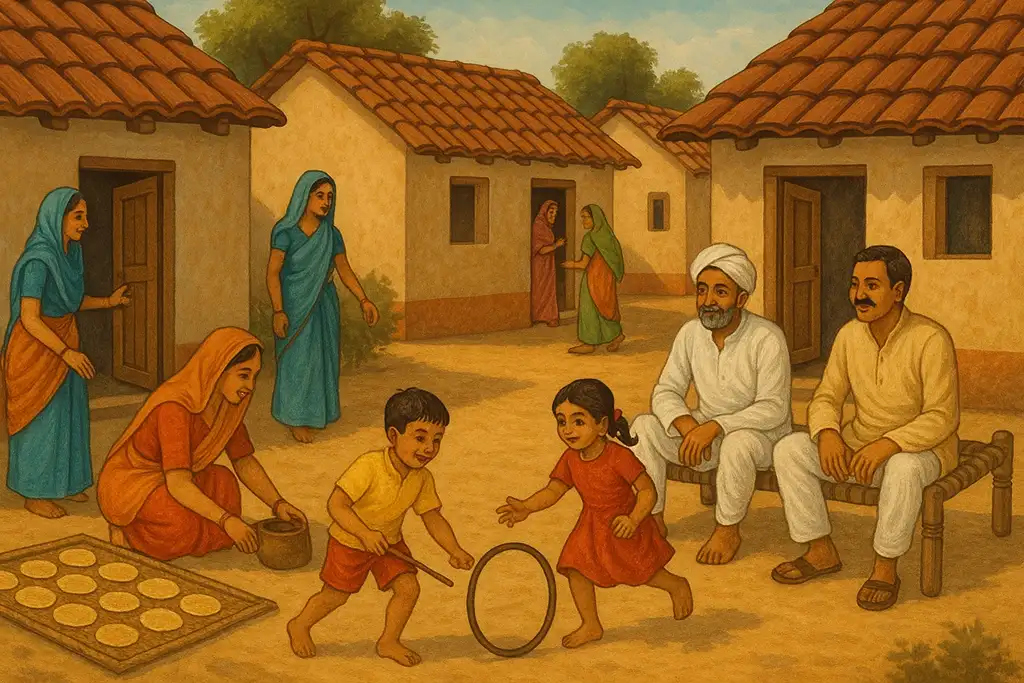
What we need is not nostalgia.
What we need is re-enchantment.
To nurture, not just build.
To build with clay, not just cement.
To listen before we draw.
To dwell, not just reside.
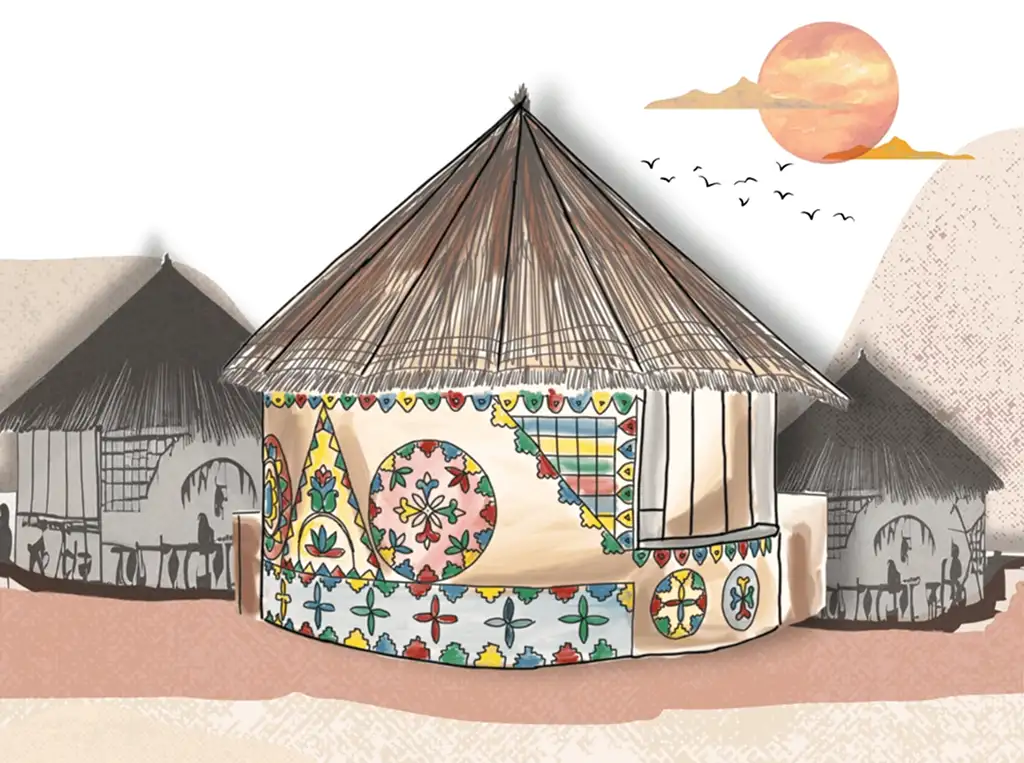
VIII. Saundaryabodha - The poetry of spaces
Poetry is the architecture of words; architecture, in turn, is the poetry of the sacred and the society. This poetry flows through beauty— not merely in appearance, but in spirit. It is the rhythm of order, the laughter of children echoing through open courtyards, the shimmer of a thousand tiny mirrors in Lippan art adorning the mud walls of a kumbhār’s hut in Kutch, bringing color to the desert. It is in the simple geometry of Warli — triangles and circles that narrate rituals and ways of life. It enabled spaces with action, upheld social function, and served the sacred, all through art as medium.
Love is a reality experienced by the lover, truth by the philosopher, and beauty by the artist. These are the three phases of the Absolute.
Ananda K. Coomaraswamy, The Dance of Shiva
Beauty cannot be created, it is discovered through creation.
It emerged in response to climate, geography, materials, and community. Yet today, we attempt to manufacture beauty with Italian marble, stainless steel fittings, and plastered walls, with little regard for context, coherence, and culture. The irony of modern design lies in its detachment: we build with glass that traps heat and then install machines to cool the same spaces. We strive to construct novelty — to outdo, to impress — often at the cost of sense and sustainability.
Beauty is mistaken as a spectacle, not a spirit.
In traditional societies, especially still in some villages, the purpose of building was not to outshine the neighbor, but to harmonize with them. Homes were oriented towards collective function, towards the ṛta— the cosmic order. Though the structures appeared similar from the outside, each bore the distinctiveness of its dweller. Uniformity was not sameness — it was harmony.
Beauty was born of discipline, not display.
Today, however, our aesthetics are increasingly shaped by Western paradigms, where glass and steel are considered beautiful simply because they dazzle the eye. Their reflectivity and sheen create an illusion of infinite space, numbing all other senses. We confuse this sensory arrest with progress, mistaking surface gloss for depth, and spectacle for spirit.
IX. Epilogue: The Architect as Listener
Let architecture cease to be the ego of form.
Let it return to being the ear of the earth.
Let us build again like the ancient Indian did — not to impress, but to belong.
For when we align with the sun, the soil, and the stories, the house becomes more than shelter. It becomes a song. A story. A sacred promise.
And in that promise, the Earth whispers back.
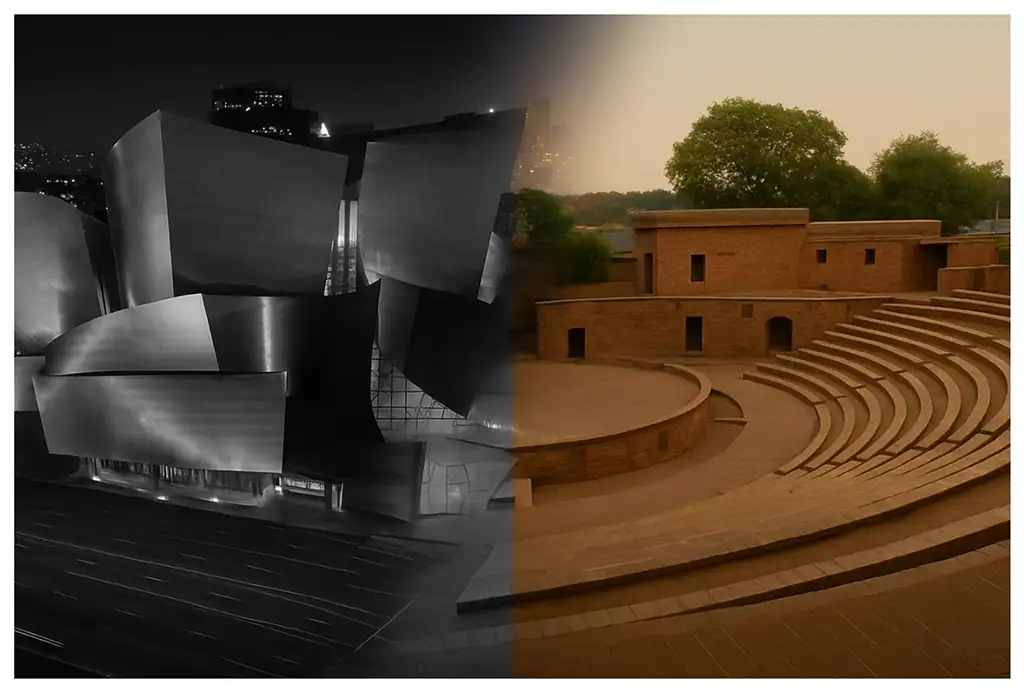
References
- Banathy, B. H. (1996). Designing social systems in a changing world. Springer.
- Baker, L. (1991). Brick and beyond: The work of Laurie Baker. Rupa & Co.
- Doshi, B. V. (2019). Paths uncharted. Vāstu Shilpā Foundation.
- Han, B.-C. (2020). The disappearance of rituals: A topological critique of acceleration (D. Steuer, Trans.). Polity Press.
- Hosagrahar, J. (2005). Indigenous modernities: Negotiating architecture and urbanism. Routledge.
- Kamath, V. (2012) in Vernacular Traditions: contemporary architecture. The Energy and Resources Institute (TERI) Press.
- Kumar, K. (1997). The idea of Englishness: English culture, national identity and social thought. Routledge.
- Liang, S. (1984). A pictorial history of Chinese architecture: A study of the development of its structural system and the evolution of its types (W. Fairbank, Trans.). MIT Press. (Includes analysis of Yingzao Fashi.)
- Menon, A. G. K. (2011). Cultural significance of architecture: A critique. In A. G. K. Menon (Ed.), Architecture and identity (pp. 65–80). INTACH.
- Ravindra Sharma (2024). In Bharat Gaatha: Ghar Evam Vaastu, edited by Ashish Kumar Gupta. Indira Gandhi National Centre for the Arts.
- Sinha, A. (2006). Landscapes in India: Forms and meanings. University Press of Florida.
Image Sources
- Cover Image Sketch - Srushti Joshi
- Image 2 - Ravindra Sharma (2024). In Bharat Gaatha: Ghar Evam Vaastu, edited by Ashish Kumar Gupta. Indira Gandhi National Centre for the Arts.
- Image 4 - What are Shoji? Complete Guide to Japanese Paper Screens
- Image 6 - Kutch Bhungas: Gujarat's Mud Architecture
